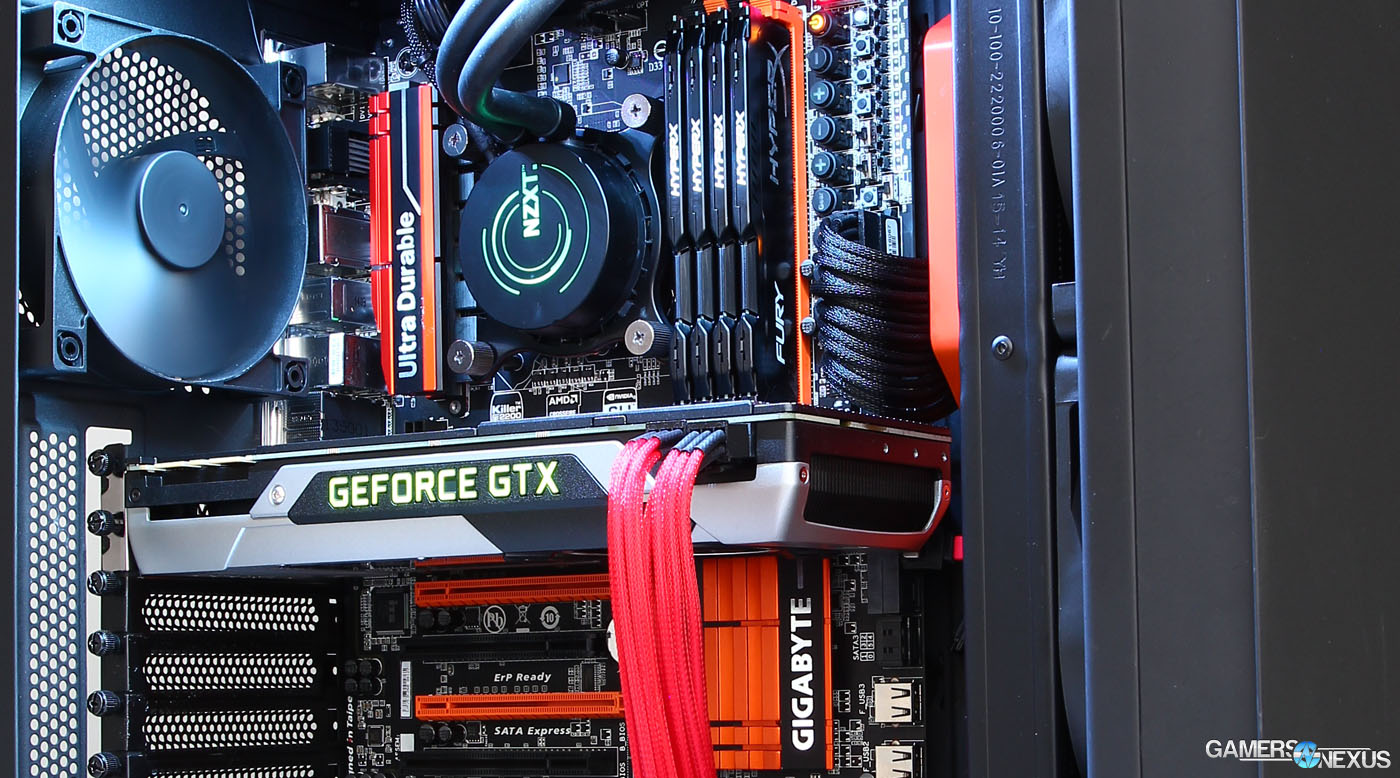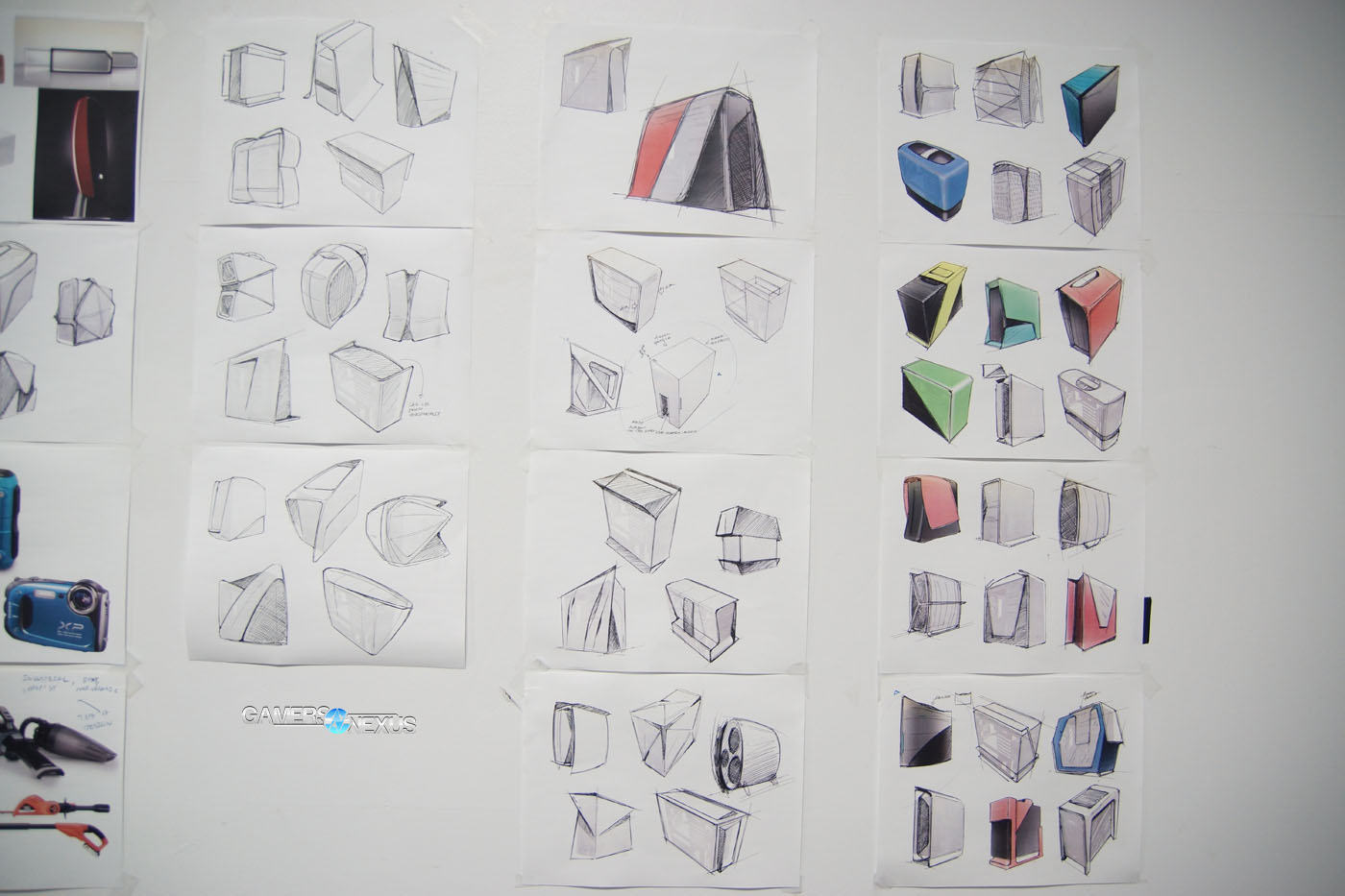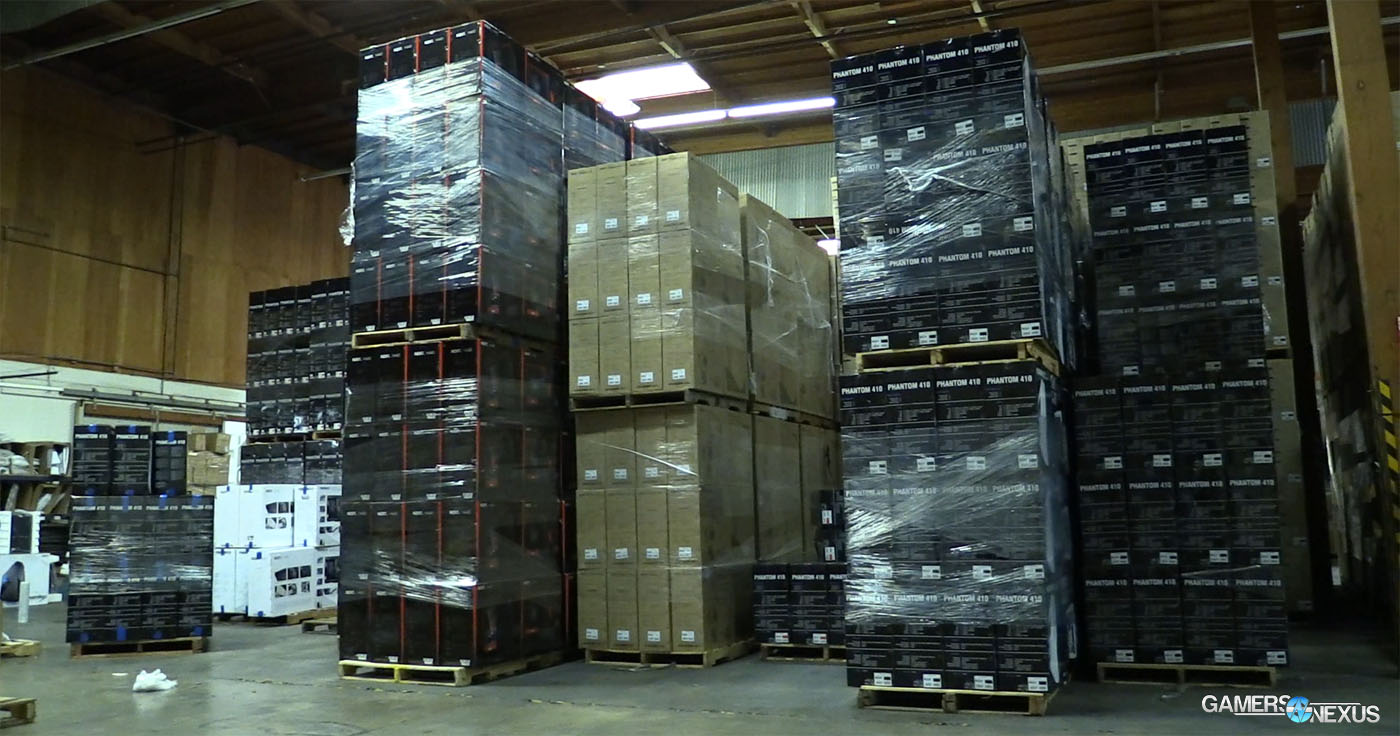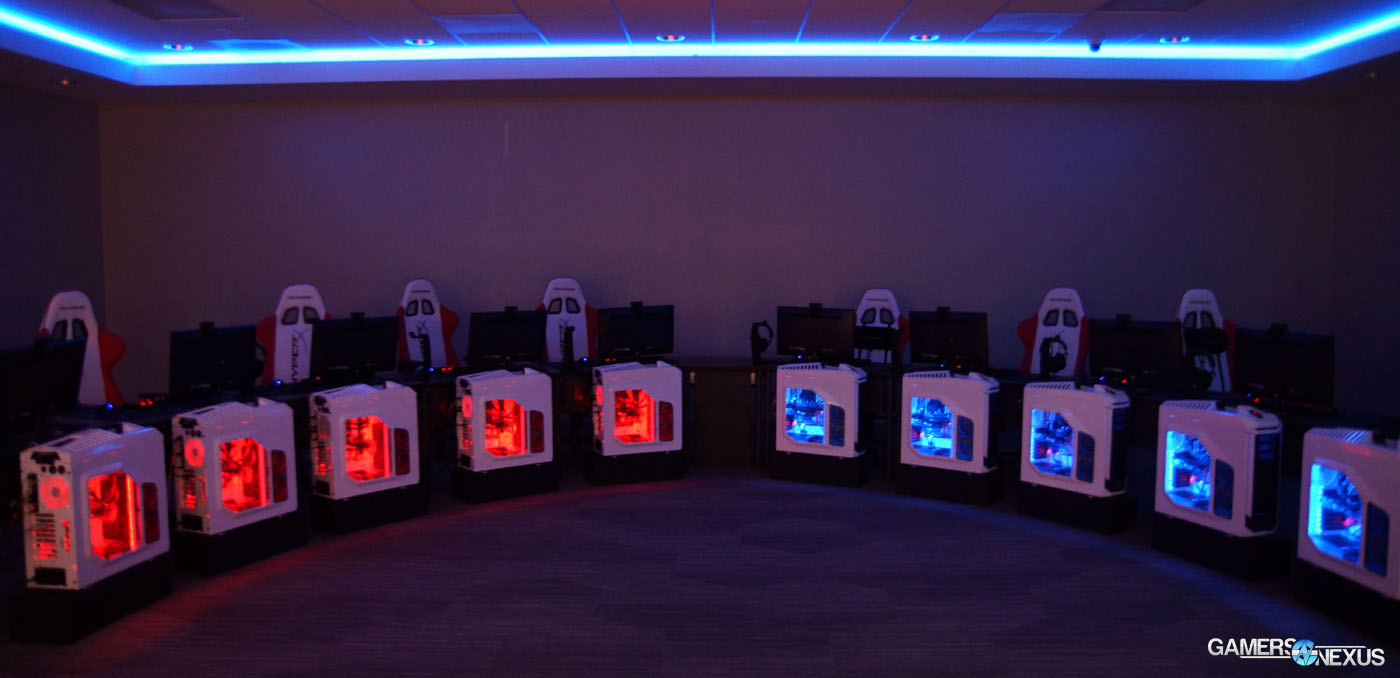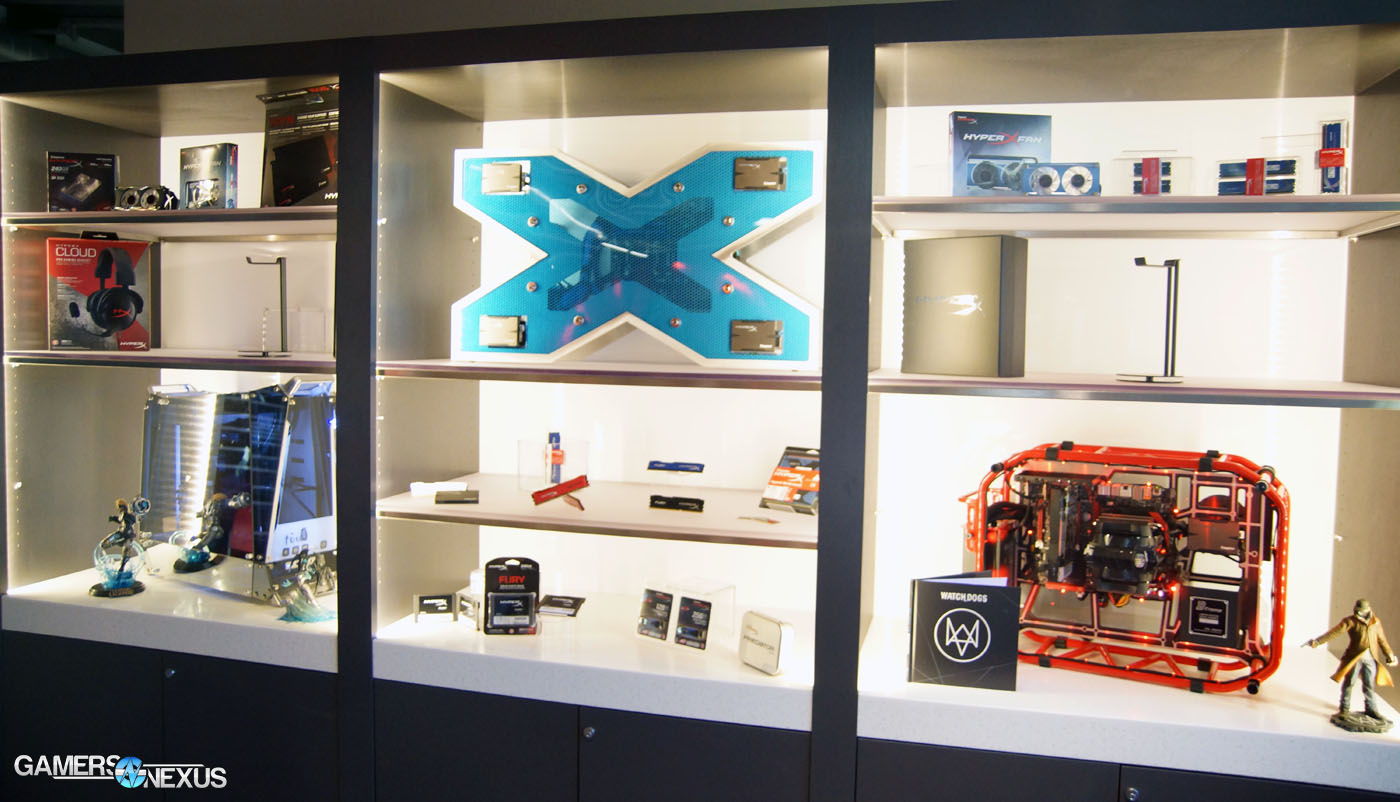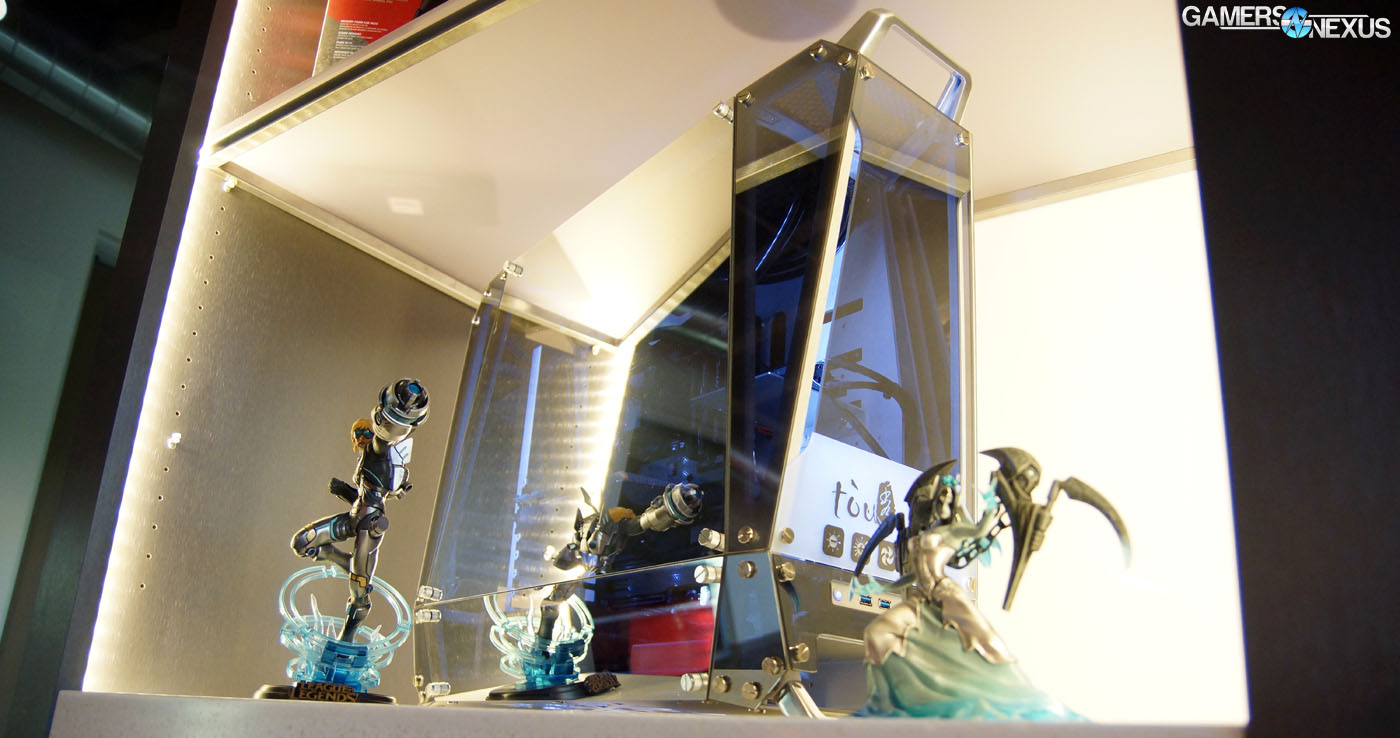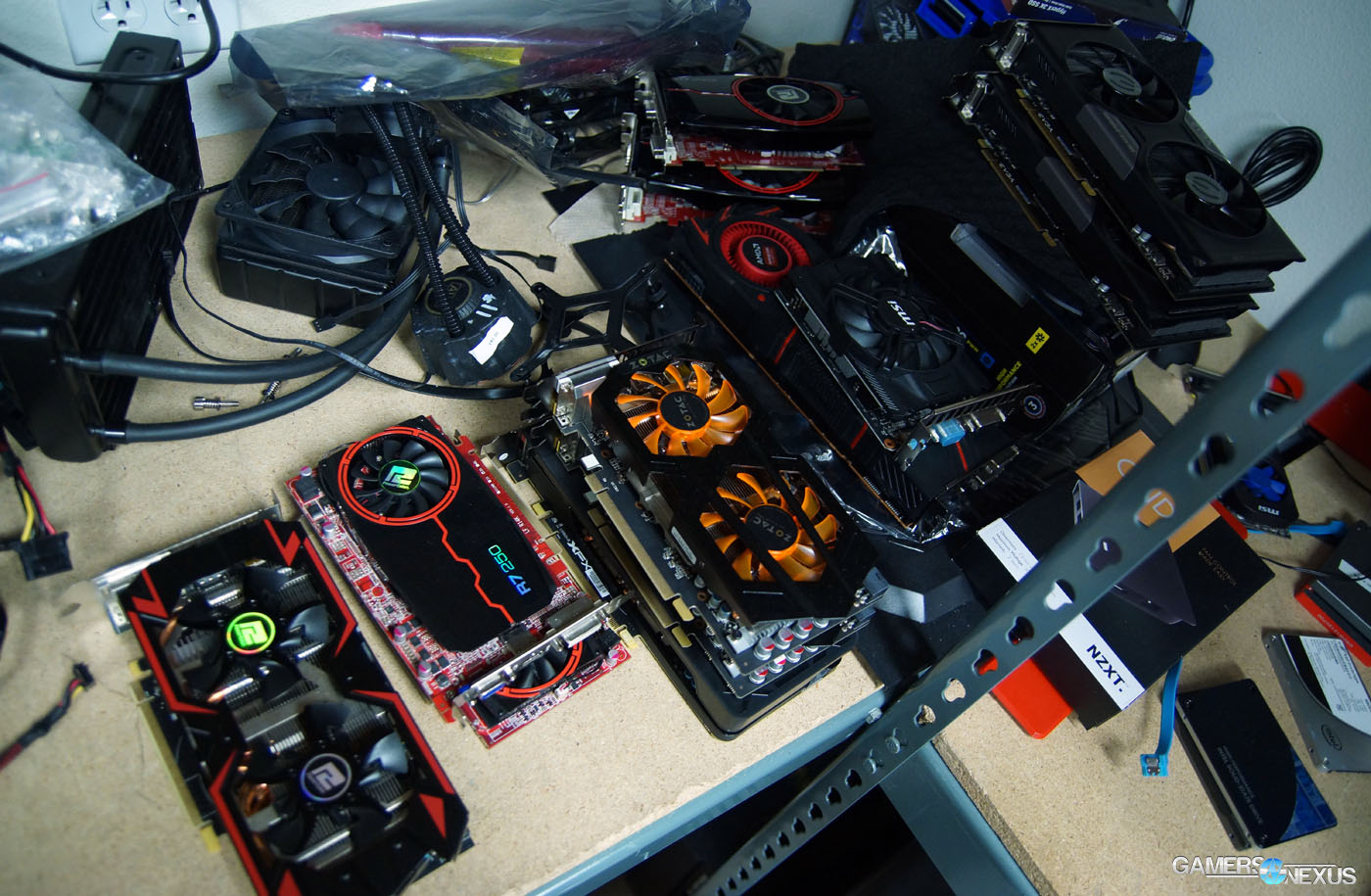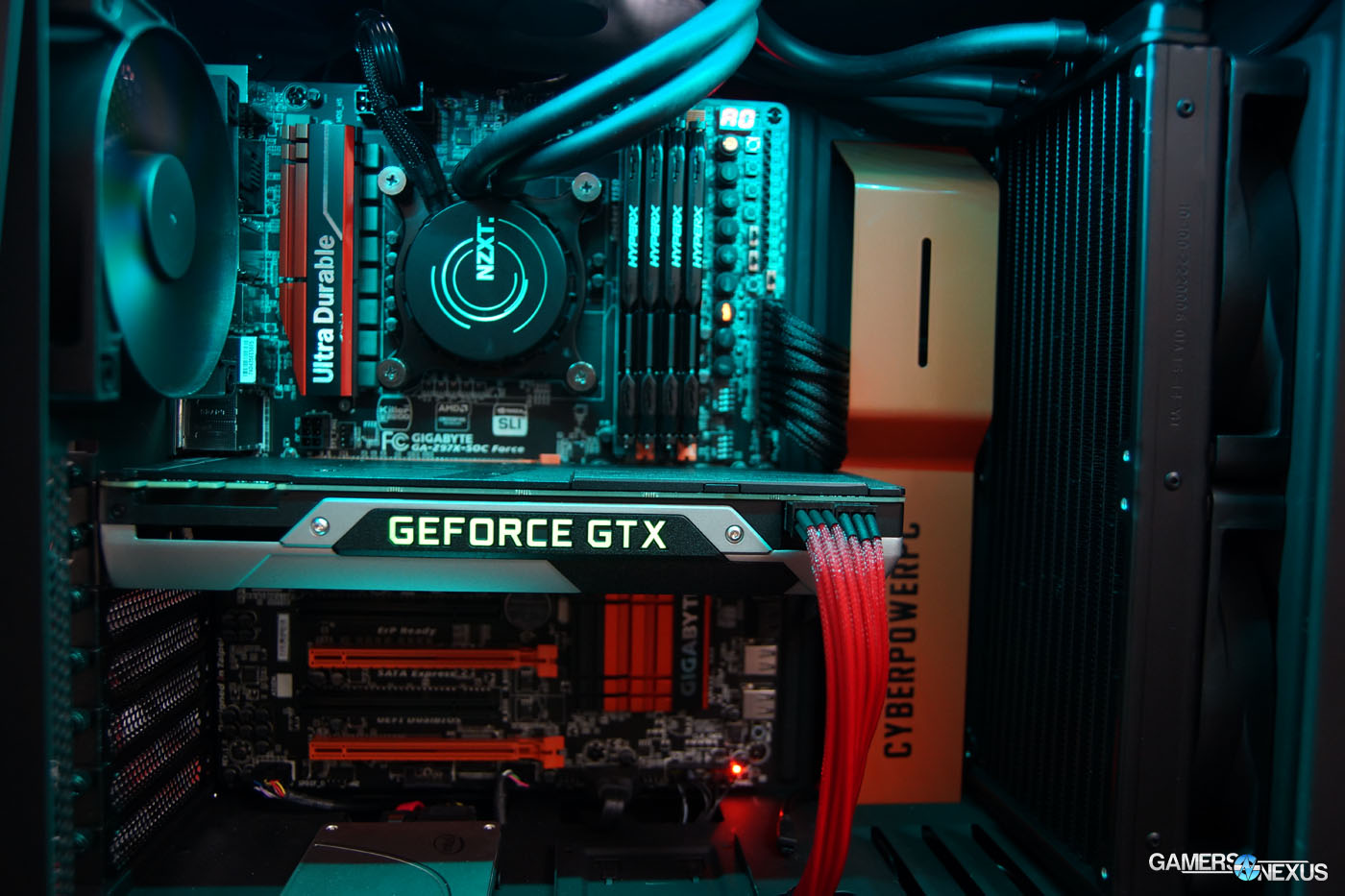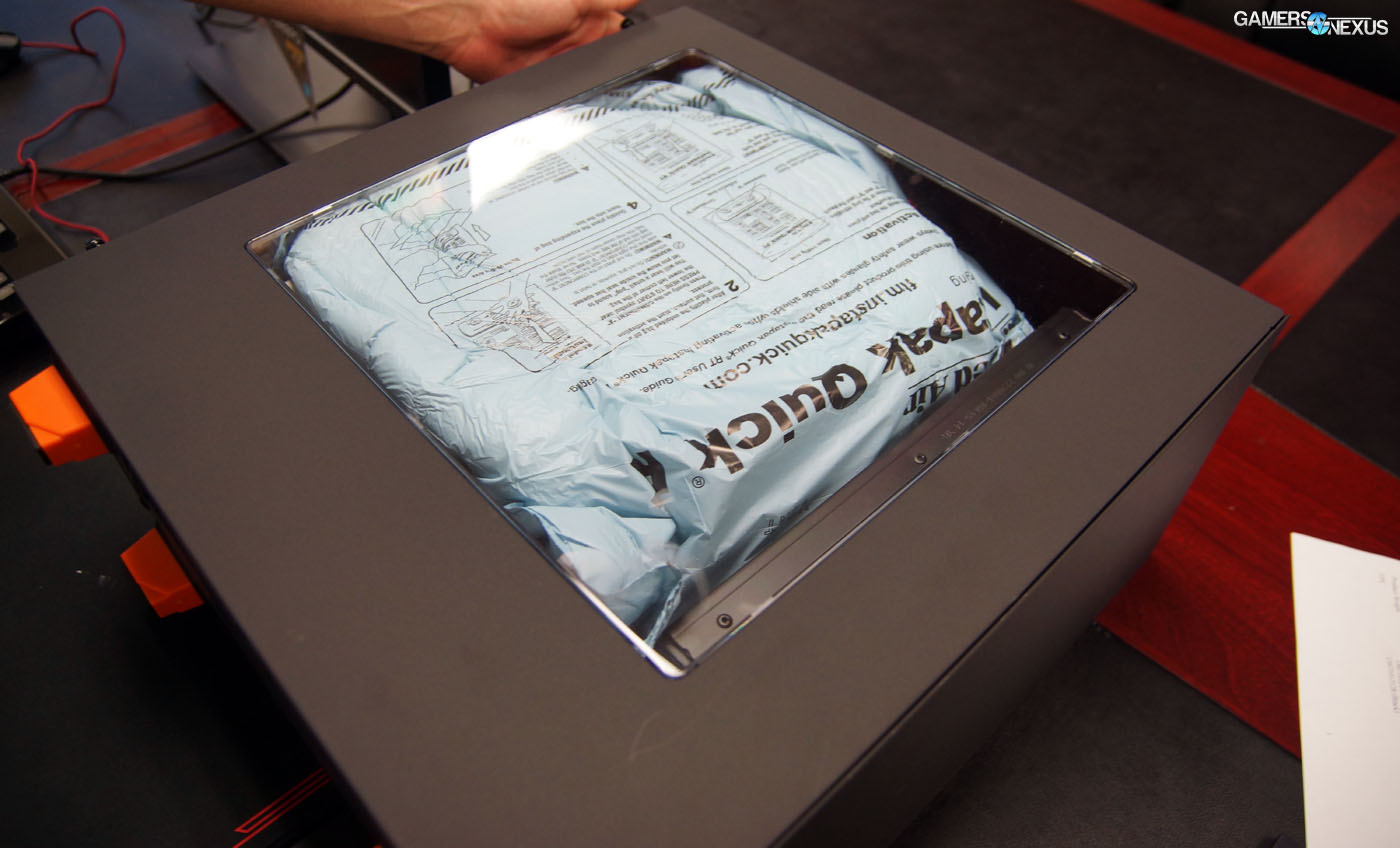Most of the tech industry’s major players are located somewhere in California – a state that has, in our experience, proven to be very large and very saturated with horrifyingly bad drivers. It also happens to be saturated with leading technology innovators and game development companies; the hardware split is pretty even between SoCal (Orange County, Fountain Valley, LA, Industry) and NorCal (home to Silicon Valley). Game developers mostly hang-out in San Francisco and San Jose.
We’ve previously toured both regions, with some of our best content focusing on nVidia’s silicon failure analysis lab (San Jose) and Kingston’s automated RAM/SSD manufacturing line. Following Game24 and the GTX 980 launch, we returned to the Los Angeles area for more. In our most recent California trip, we visited NZXT, HyperX, CyberPower, and iBUYPOWER to see their assembly lines and warehouses.
Video Walkthrough of NZXT, HyperX, CyberPower, iBUYPOWER & Machining
Visiting NZXT
NZXT is a rising star among case and cooling manufacturers. We remarked that the H440 is “the reason we review cases” upon its launch, further stating that the unit is largely responsible for retaining interest in an otherwise repetitious market segment. NZXT does all of its manufacturing and tooling overseas – as most companies do – but has an Industry-based office that handles much of the design, marketing, and product development. With NZXT Marketing Specialist Mitch Podlaha, we toured the company’s case-filled warehouse and adjoined design room (which doubles as an AC drop-testing facility – don’t ask) to get a feel for the environment.
Here’s one of the walls in NZXT’s design room, showing a few of Design Director Shin Feng’s inspirations and early drafts (former NZXT PM Rob Teller also contributed to these designs). This is where the cases either get cut or advance to further production.
You'll recognize a few of the cases in these drawings as what eventually became Phantom-series or other units. I pointed out that there were a few photos and drawings of boats, to which Podlaha replied, “yeah, he went through a Yacht phase. Also a camera phase.” The mark of a good designer, I suppose, is that inspiration comes from all walks of life.
Even for computer cases.
Rounding the corner into NZXT’s warehouse, we were instantly staggered by the sight of a Great Wall of Cases: Palettes of H440 and Phantom 410 enclosures – and many others – stacked floor-to-ceiling. Dozens of them.
This is where the shipping happens. NZXT receives its cases local to its City of Industry warehouse, then ships out to etailers, retailers, or directly to customers (through the armory).
As for what the company's up to next, you'll have to stay tuned to all of our relevant social media pages and home page (twitter / facebook / YouTube). It's interesting, that's for sure. There's no doubt that NZXT is sticking with cases as a staple – something it has historically done very well – but we think their next project will catch you by surprise.
As a point of interest, we saw the famed H440 in its earliest form – optical slots included and a noteworthy lack of PSU shroud. Amazing how things change in design.
Visiting Kingston's HyperX Division
Again, we've already done the gambit with Kingston Technologies' SMT line (showing how RAM & SSDs are made), but this visit saw a return to the Fountain Valley memory manufacturer to tour the revamped HyperX building. Catching everyone up, here's the video from our first visit:
Since our previous visit, Kingston has further built-up its HyperX brand, including an expensive remodel of the corporate offices. The HyperX office houses an eSports gaming arena for show matches and sponsored teams, built to enable up to 5v5 in a mood-lit red-v-blue atmosphere. Each station includes what is effectively a racing seat, some Q-PAD mechanical keyboards, HyperX headsets, HyperX Beast memory, and high-end gaming systems. A set of couches face the arena.
In the next room over, a display case shows off BS Mods' HyperX case mod that we previously filmed, flanked on either side by a League of Legends / In-Win shelf and Watch Dogs shelf.
Visiting CyberPowerPC
CyberPowerPC is one of the largest system integrators in the business. Familiar names might be Digital Storm, iBUYPOWER, and Origin PC, but there's no question that CyberPower is among the largest in shipped quantity, responsible for building hundreds of systems a day. CyberPower is based in City of Industry, California and handles all assembly local to the US.
We had a full walkthrough of the test lab, burn-in bench, and assembly line; we also got a look at an upcoming joint-collaboration between CyberPower and NZXT, which will be posted shortly on the site.
CyberPower's testing lab looks somewhat familiar to our own. The technicians are responsible for performing a huge matrix of game FPS benchmarks, all posted on CyberPower's website when users configure a system. Stacks upon stacks of video cards, CPUs, and boards lie waiting to be benchmarked for each title. The same goes for SSDs, CLCs, and coolers, all of which can be seen scattered on the lab tables.
The assembly line is sort of interesting. An assembly line at a system integrator can be thought of as similar to ordering food at a restaurant: They receive a ticket, a builder grabs a box of parts, and assembly begins at an ESD-safe station. We were told by Vong that strictly assembly can take anywhere from 13 minutes to “much longer,” depending on how complex the build is; the quickest builds are those that are shipped to etailers (like Newegg), as they're fairly template systems. The longest involve custom liquid loops and multiple video cards or drives.
Built systems are then transported via conveyer belt to the PXE (pronounced “pixie,” Preboot Execution Environment) bench, where they're imaged with an OS and necessary drivers in one blast. After this, it's shifted to the burn-in bench, tested for several hours to ascertain stability of components, and then packed for shipping. The packing is sort of cool – having never ordered from an SI personally, I asked about what was done to ensure the video card did not snap in the slot. The answer is this:
It's a pack filled with chemicals that expand when mixed. The bag stops expanding when it meets opposing force, forming around the video card and other components. Customers then remove the bag (carefully) and hopefully have a non-cracked video card.
You can view the packing and shipping machines at the end of our video at the top of this article.
Visiting iBUYPOWER
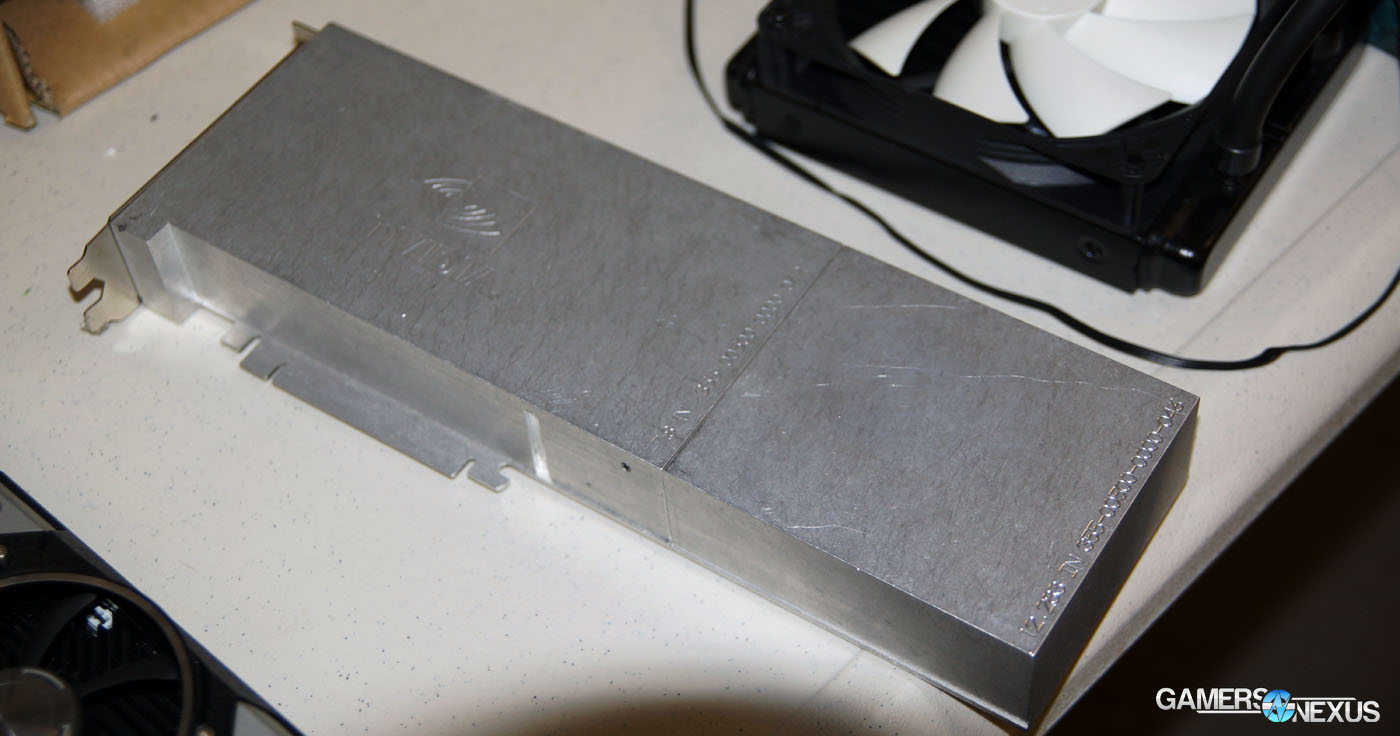 An NVIDIA-supplied GTX 400 series size tester for cases. Can be split into two for a wider range of sizes.
An NVIDIA-supplied GTX 400 series size tester for cases. Can be split into two for a wider range of sizes.
Our trip to iBUYPOWER was largely unguided, unfortunately, but we still got a good look at the assembly line and warehouse. iBUYPOWER has been in the industry for a long time – it's easily one of the oldest system integrators – and uses a similar process to the one described above. The company actually got its start doing remnant inventory builds for other companies (like Dell) when they were over capacity.
As for the warehouse: A monitor overlooks the warehouse floor with a “target build” and current build count (X/Y) to help track progress for the day, conveyer belts move boxes of components and built systems between stations, and a custom FurMark burn-in suite is used to stress-test gaming GPUs.
 iBUYPOWER's shelf of FPS-testing equipment for driver updates and config iterations.
iBUYPOWER's shelf of FPS-testing equipment for driver updates and config iterations.
We've got a full video of this coming some time in the next week.
Once the devices are burned-in and tested for fault, they're packed (with the same “instant pack” product) and shipped out to customers.
And that was the better part of our SoCal hardware vendor tour. For those considering a visit, former NZXT PM Rob Teller (“retell”) introduced us to “Lucky Boy,” makers of the most filling breakfast burrito on the planet. Definitely the most healthy – eggs, bacon, potatoes, cheese. Can't get healthier. We'd encourage a visit if you're ever out that way.
I'll be waiting for my review sample, Lucky Boy!
Stay tuned to the YouTube channel and home page for more updates and videos from our company visits.
- Steve "Lelldorianx" Burke.
